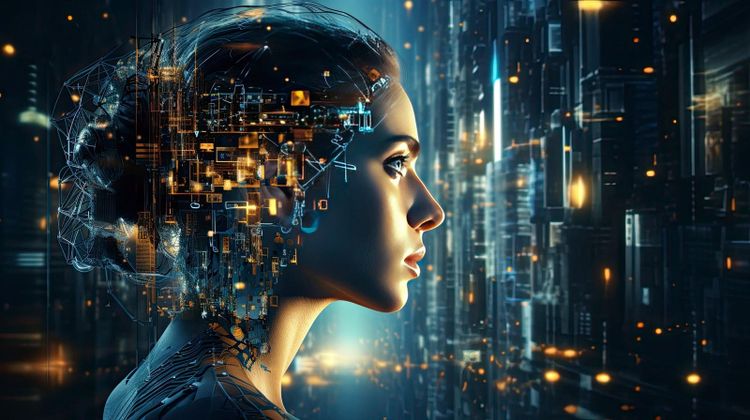7 Ways Marketers Should Be Using Generative AI Now

7 Ways Marketers Should be Using Generative AI Now
Adobe StockMarketing is all about engaging customers with compelling content – delivering thoughtful, inspiring messages that help to create a deeper relationship with the brand. Technology plays an increasingly important role in the relationship between brand and customer. And right now, generative AI is the technology making the biggest waves in marketing. Tools like ChatGPT and Midjourney are proving to be valuable tools in marketing, allowing teams to streamline or automate the creation of all sorts of content.
Here are seven ways marketers could deploy generative AI tools in their everyday work.
1. Writing Marketing CopyGenerative AI can be used to write text for a variety of purposes, including emails, ad copy, blog posts, social media posts, product descriptions, and even scripts for ads. And it can do this in a tone that suits your brand while conforming to specific brand guidelines. Best of all, you don’t need to have any knowledge of software programming to tap into generative AI tools because they can generate content based on natural language prompts, like, “Write me an Instagram caption, with appropriate hashtags, to tell customers about our free delivery offer this month.”
2. Coming Up With Fresh IdeasGenerative AI doesn’t just excel at creating text. It can also be used to come up with new ideas that boost brainstorming sessions. And again, this can be done with simple, conversational text prompts, such as “Give me 10 ideas for a video advert showcasing our new sneaker design.”
3. Creating Beautiful ImagesGenerative AI can create imaginative visuals for ads or images of your products in a variety of settings – all without having to invest in expensive photoshoots. It can also be used to create branding collateral, including graphics and logos. And, you guessed it, this can all be done using natural language prompts.
4. Generating VideoFrom video ads for social media (or broadcasting) to product demos, why not try using generative AI for your next video project? Tools like Pictory allow you to turn content into videos and edit videos using text instructions (so no professional editing skills are required). Generative AI can also be used to create the music to accompany your videos simply by describing the type of music you want.
5. Analyzing SentimentSo far we’ve focused on creating content and ideas, but generative AI can also be used as a sentiment analysis tool – for example, looking at social media mentions to see whether customer mentions are positive, negative, or neutral. This means you don’t need any data analysis skills to get powerful customer insights. You just have to ask for what you need. As such, generative AI capabilities are quickly being introduced into existing analysis tools to better allow users to interrogate data and uncover insights.
6. Creating Multiple Versions Of Ads For Different AudiencesAnother exciting use is creating highly targeted campaigns that are different for different customer segments automatically. Meta, for example, is creating tools that allow businesses to automatically make multiple versions of Facebook ads, featuring different text and images aimed at different audiences. Elsewhere, LinkedIn has launched a new feature for B2B marketers called Accelerate, which aims to speed up ad campaign setup and automate ad optimization. LinkedIn claims it will help B2B marketers create tailored creative content in as little as five minutes.
More and more generative AI tools are including functionality around personalization. For example, Adobe’s Experience Cloud is a collection of tools, including the Adobe Real Time Customer Data Platform, Journey Optimizer, and Adobe Analytics. These tools use AI to deliver insights on customer journeys, behaviors, and engagement – information which, when combined with generative AI, can be used to automatically create hyper-personalized content.
7. Creating Personalized Customer ExperiencesAs well as creating highly targeted ads, generative AI can be used to generate fun, personalized experiences that delight your customers. In one example, superstar footballer Lionel Messi signed a deal with PepsiCo, allowing the brand to use a deepfake version of himself to promote Lays chips. As part of the Lays Messi Message campaign, users could create personalized messages from Messi to themselves in English, Spanish, Portuguese, and Turkish.
Faster, Easier, Cheaper (And Other Advantages)It’s clear that generative AI can be used to create content far cheaper and quicker than through traditional methods. As such, generative AI will allow businesses of all sizes to create beautiful images, engaging copy, and more.
But it’s not all about creating masses of content on the cheap. In fact, generative AI can be used to create a significant wow factor, as was the case with a recent Coca-Cola ad created with ChatGPT and DALL-E 2. Called Masterpiece, the ad campaign brought to life some of the world’s most famous works of art, seamlessly integrating AI-augmented animation with live action. So don’t just think of generative AI as a money- and time-saving tool (although it can definitely be both of those things) – think of it as a way to boost marketing innovation. Coca-Cola is so invested in generative AI as a transformational tool that it has appointed a Head of Generative AI.
What’s more, generative AI can give brands the ability to easily personalize ads and marketing materials on a mass scale. And in this age of hyper-personalization, the ability to generate text, images and even videos that are tailored to audience preferences could be a major competitive advantage.





































